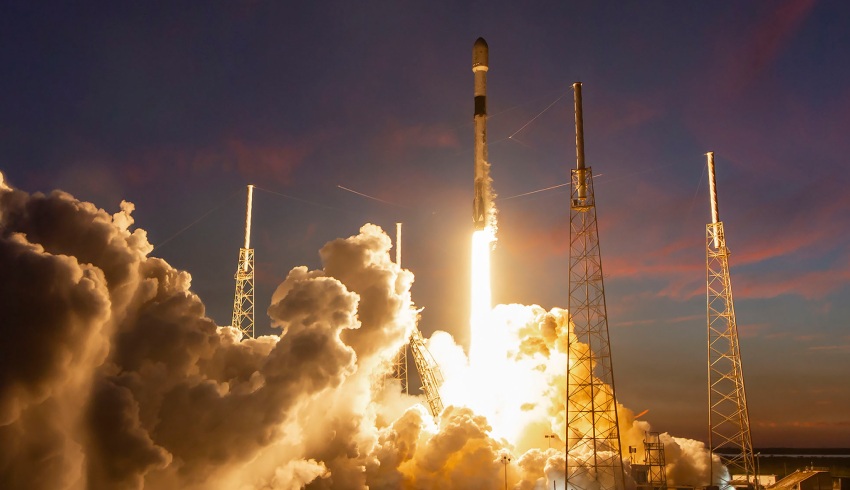
The COSMO-SkyMed Second Generation (CSG) satellite launched onboard a Falcon 9 rocket at 6:11pm EST on 31 January from Cape Canaveral Space Force Station in Florida.
“Falcon 9 has successfully lifted off from pad 40 at Cape Canaveral Space Force Station, carrying the COSMO-SkyMed satellite to a polar sun-synchronous orbit” said Jessie Anderson in the live broadcast, a production engineering manager for the Falcon at SpaceX.
It blasted off immediately as the launch window opened, and in just under eight minutes, the rocket’s first stage returned to Landing Zone 1 back on Earth.
The next gen satellite will monitor the Earth for emergency prevention, strategy, scientific and commercial purposes according to the European Space Agency.
“Providing data on a global scale to support a variety of applications among which risk management, cartography, forest and environment protection, natural resources exploration, land management, defense and security, maritime surveillance, food and agriculture management,” the ESA said.
The prime contractor for the launch is Thales Alenia Space Italia, a global defence company providing services to both civil and military markets.
CEO Massimo Comparini said in an interview: “COSMO-SkyMed is a key program to monitor our planet, to sustain new services and applications, [and] to bring information about the evolution of our planet”.
Monday’s launch marked the third launch and landing of this particular booster, which previously supported the lift-off of Arabsat-6A and STP-2 in 2019.
Falcon 9’s first stage has landed on Landing Zone 1 pic.twitter.com/Vfc7UDaeun
— SpaceX (@SpaceX) January 31, 2022
The original launch was set for Thursday, but the forecast showed only 60 per cent chance of good weather conditions, mostly concerning high winds and rain.
It comes almost three years after the CSG-1 launched on board an Arianespace Soyuz rocket from French Guiana on 18 December in 2019.
It is the new and improved COSMO-SkyMed (CSK) which was a constellation of Earth imaging satellites launched between 2007 and 2010 for Italy.
According to the ESA, the CSG is “at the forefront of radar technology” and will ensure the continuity of the CSK satellites.
The program is funded by Agenzia Spaziale Italiana (ASI), the Italian Ministry of Defence and the Italian Ministry of Education, Universities and Scientific Research.

Isabella Richards
Bella Richards is a journalist who has written for several local newspapers, her university newspaper and a tech magazine, and completed her Bachelor of Communications (Journalism) at the University of Technology Sydney in 2020. She joined Momentum Media in 2021, and has since written breaking news stories across Space Connect, Australian Aviation and World of Aviation.
You can email Bella on: [email protected]
Receive the latest developments and updates on Australia’s space industry direct to your inbox. Subscribe today to Space Connect here.









